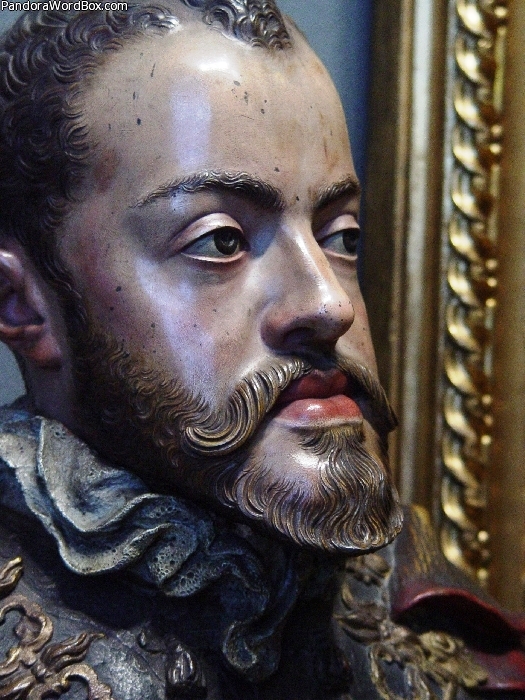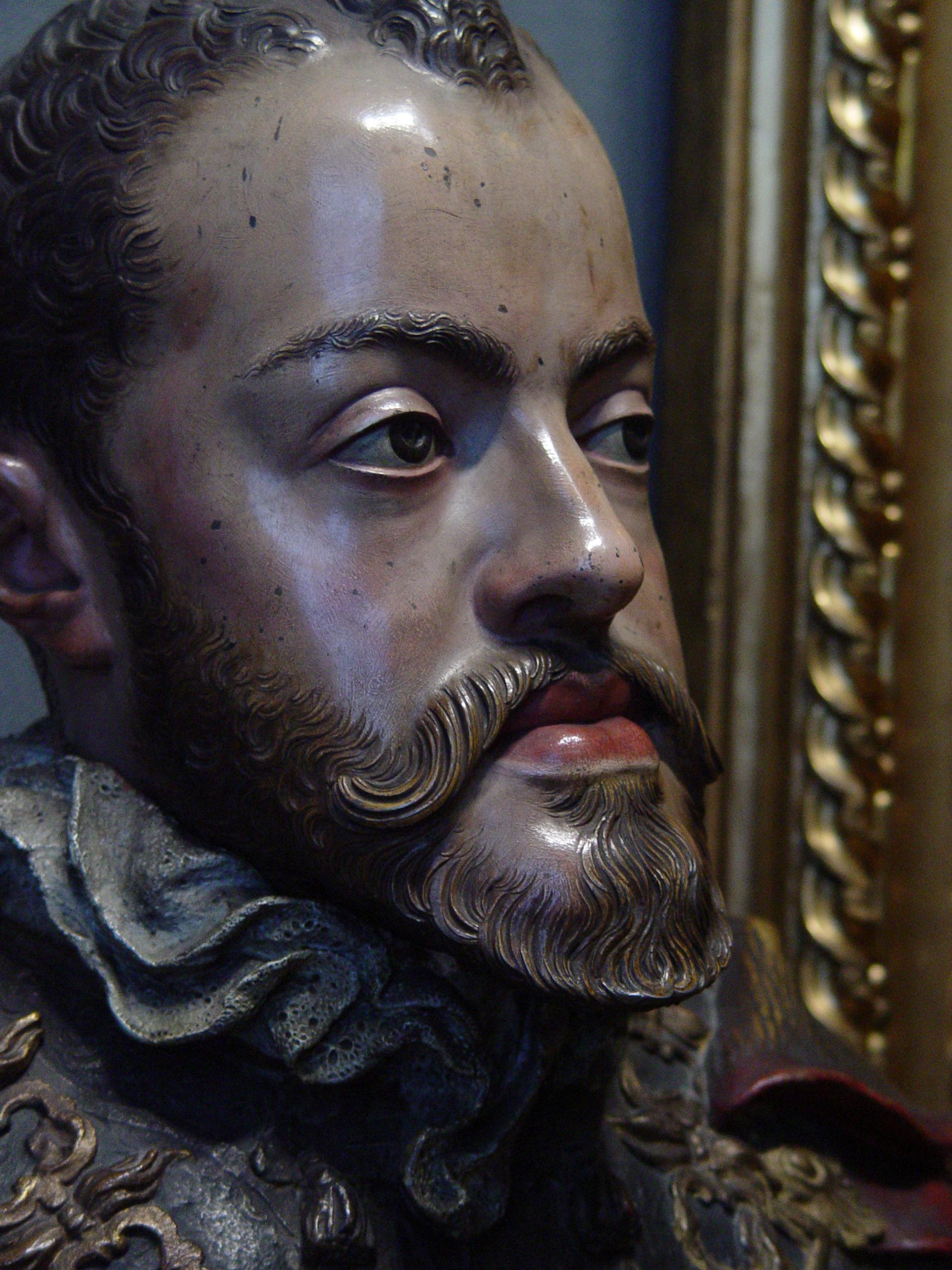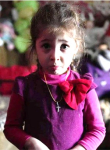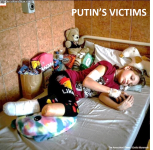Our websites offer information mostly for educational purposes with no intent to alter health care protocols nor to serve as a sole source of medical information.
Always seek the advice of your local health care provider.
|
×  Get the Point! PAIN – WOMAN – UKRAINE – PUTIN MOTHER – SISTER – SPOUSE – MOTHER RUSSIAN WAR – HOLOCAUST – GENOCIDE |
HABSBURG JAW (MANDIBLE) - ONLY?

"Phillip II of Spain - Hapsburgh Jaw - Prognathism " (see related A | B | C | D | E | F | G | H | I), 1556 Pompeo Leoni (c.1533-1608) Kunsthistorisches Museum, Vienna, Austria
Bust in Terracotta by Balthasar Moll of Innsbruck (1717-1785) based on a work by Leoni.
Mandibular prognathism or "progenism" can be due to a gene mutation manifested as relatively mild or devastating developmental alteration of the growth of the jaw (mandible), tongue (glossa), and other components of the first-second pharyngeal arch. Some historians (probably not experienced in clinical matters) point their fingers at the Polish Mascovian branch of the Plast family as the source of this mutation. Sculptures in the St. John's Cathedral in Warsaw include some of individuals with this sort of anomaly. The father of Maximilian I manifested signs of the Habsburg lip-jaw as Maximilian - it should be noted that some court painters, to please their masters, hid or minimized the facial defects of their masters (see links to additional images). The grandson of Maximilian I was Carlos I of Spain I - his parents did not have the abnormalities he did - some could suspect that his grandfather Maximilian I was also his father. In a related page, note Carlos II who had far more severe anomalies, and his physical and psycho-metal development were severely compromised resulting in his premature death. Presumably, Carlos II inherited one mutated gene from his mother and another from his father - see Carlos II page describing the severity of such a "double gene hit".
(alternative description)
The large lower maxilla, mandible or jaw is prominent, particularly the chin, or menton, (medically referred to as prognathia). This bony overgrowth is caused by a single autosomal (sex independent) gene mutation that affected many members (about 50% of descendants of an affected parent - baring non-paternity) of the royal Habsburg family.
20240328 ww
|







